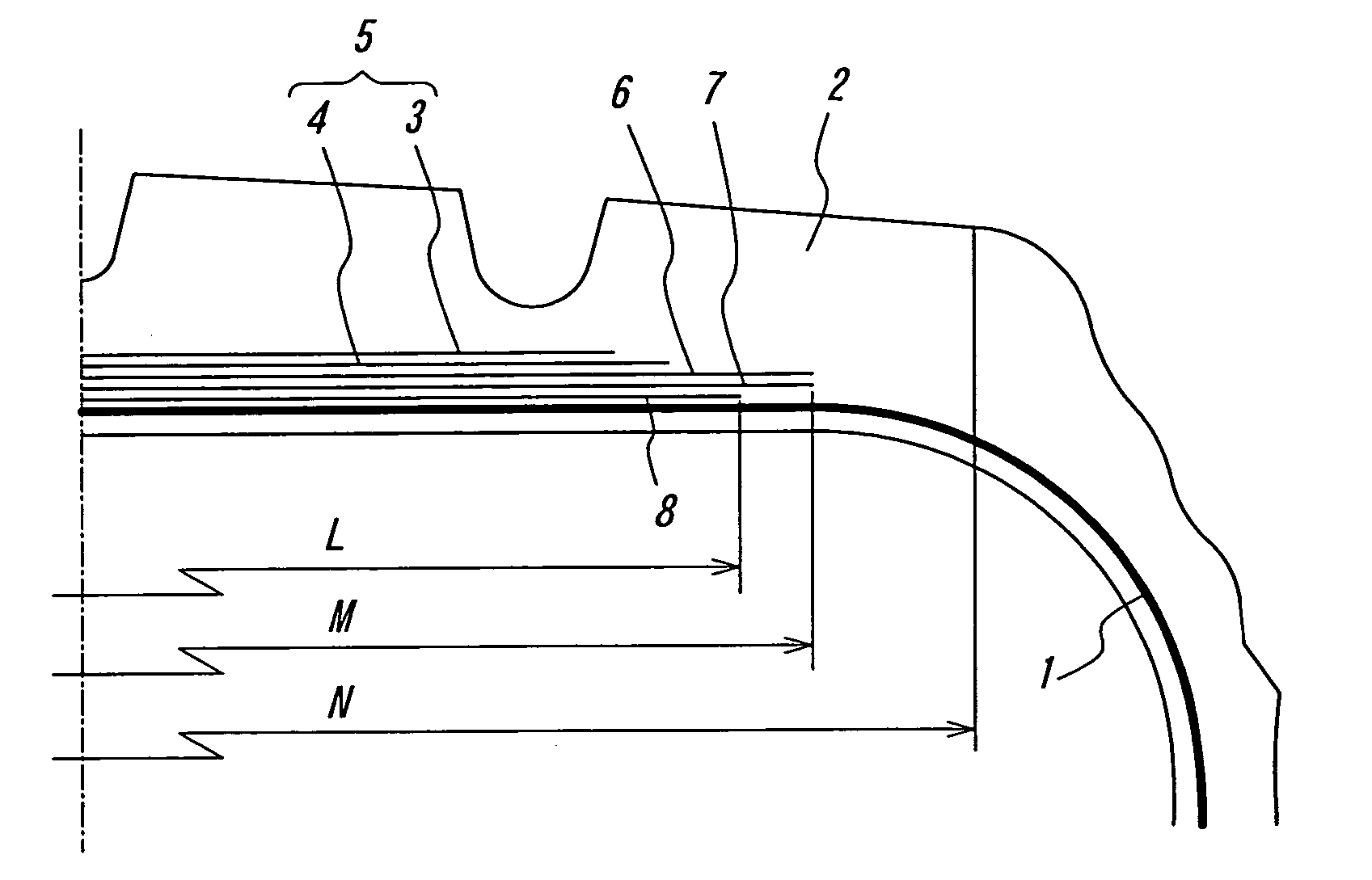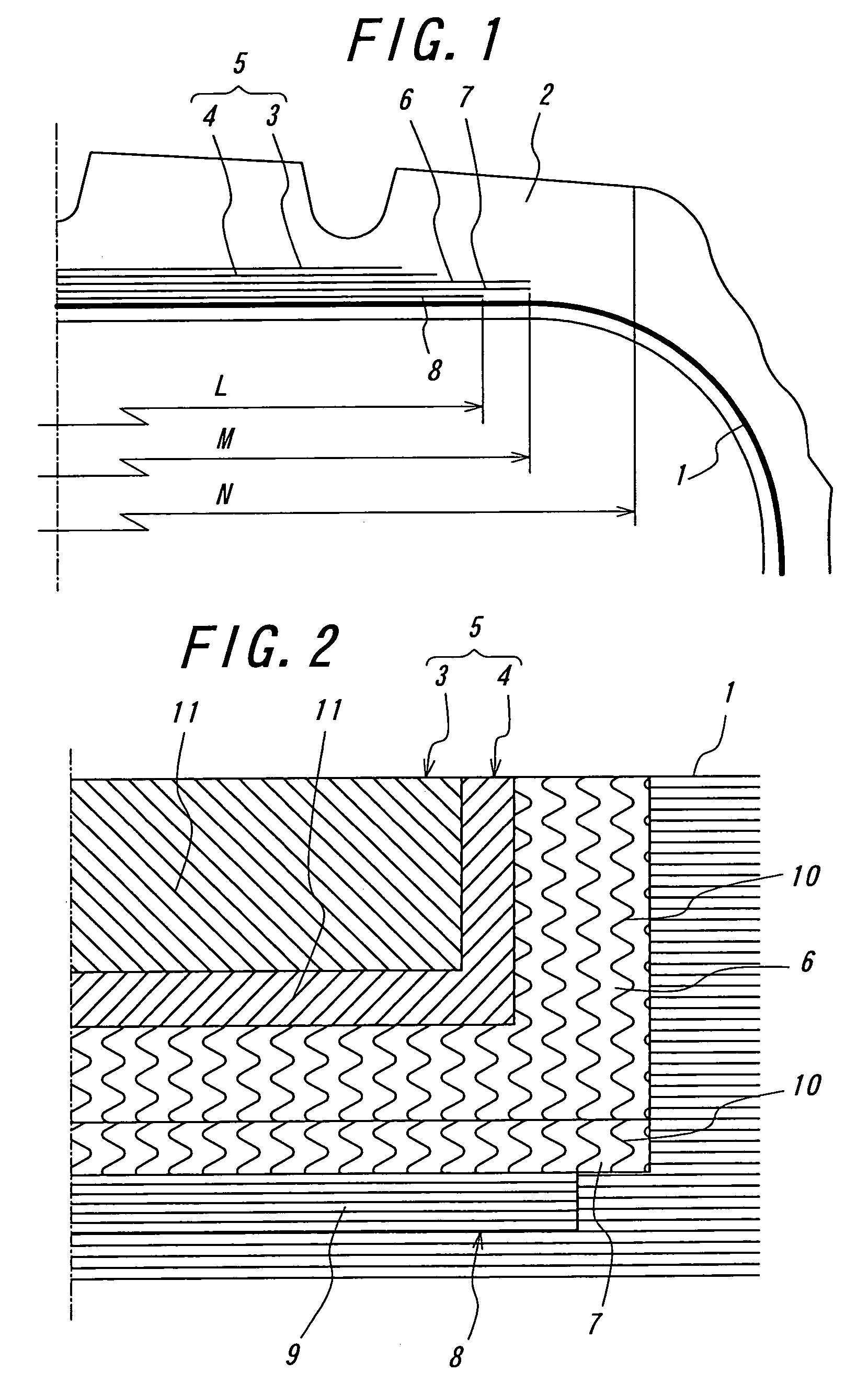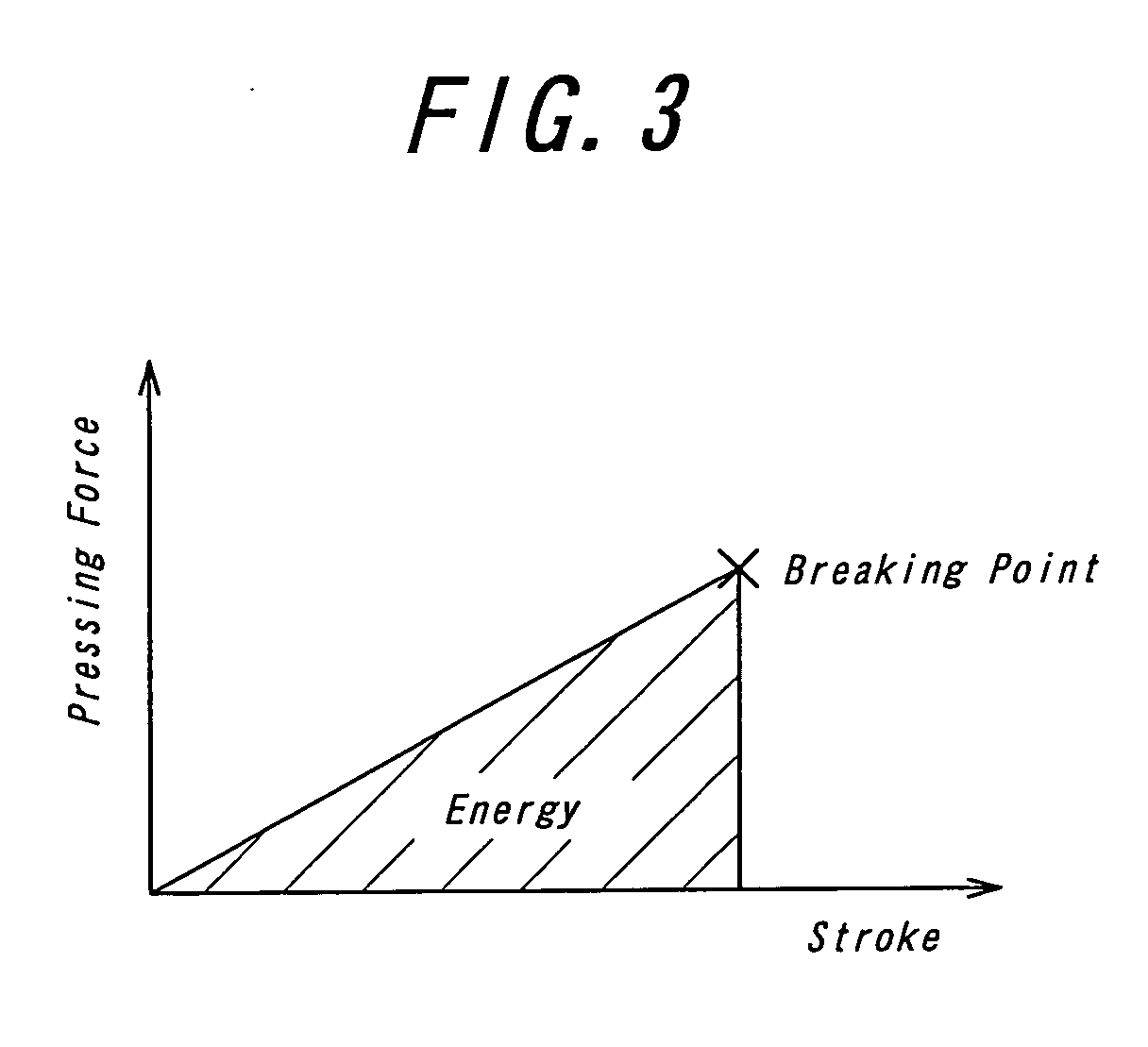Pneumatic tire
a pneumatic tire and tire body technology, applied in the field of pneumatic tires, can solve the problems of large input force on the transversal member carcass cord, and large circumferential strain on the tread rubber, so as to improve the bending stiffness
- Summary
- Abstract
- Description
- Claims
- Application Information
AI Technical Summary
Benefits of technology
Problems solved by technology
Method used
Image
Examples
example 1
[0072] As an example of the invention, low-profile pneumatic tires for heavy load having tire sizes of 435 / 45 R22.5 and 285 / 60 R22.5 are prepared for the purpose of evaluating their characteristics of preventing precedent breakings of the carcass when a projection input penetrates a pneumatic tire for heavy load which has a transversal reinforcement layer radially outwardly adjacent to the carcass, and a circumferential reinforcement layer arranged radially outwardly or inwardly on a belt or between belt layers. The tires are mounted on rims having rim sizes of 14.00×22.5 and 9.00×22.5, respectively, and air is applied to them to give the internal pressure of 900 kPa. A hemispheric projection having a diameter of 40 mm is pressed against the tread portion at the tire's equatorial plane. After any one reinforcement layers among the carcass, the belt, the circumferential reinforcement layer, or the transversal reinforcement layer breaks, the presence of the precedent breaking of the c...
PUM
| Property | Measurement | Unit |
|---|---|---|
| inclined angle | aaaaa | aaaaa |
| inclined angle | aaaaa | aaaaa |
| elongation | aaaaa | aaaaa |
Abstract
Description
Claims
Application Information
 Login to View More
Login to View More - R&D
- Intellectual Property
- Life Sciences
- Materials
- Tech Scout
- Unparalleled Data Quality
- Higher Quality Content
- 60% Fewer Hallucinations
Browse by: Latest US Patents, China's latest patents, Technical Efficacy Thesaurus, Application Domain, Technology Topic, Popular Technical Reports.
© 2025 PatSnap. All rights reserved.Legal|Privacy policy|Modern Slavery Act Transparency Statement|Sitemap|About US| Contact US: help@patsnap.com



